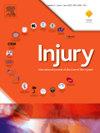Evaluating brain injury outcomes in female subjects: A computational approach to accident reconstruction of fatal and non-fatal cases
IF 2.2
3区 医学
Q3 CRITICAL CARE MEDICINE
Injury-International Journal of the Care of the Injured
Pub Date : 2025-01-30
DOI:10.1016/j.injury.2025.112164
引用次数: 0
Abstract
Traumatic brain injury remains a significant concern in public health, affecting millions of individuals globally and leading to long-term cognitive and physical impairments. Historically, research in this field has primarily focused on male subjects, often neglecting to consider the substantial biomechanical and anatomical differences between genders and individuals of varying ages. The present study investigates sex-specific biomechanical responses to head impacts in real-world accidents, employing an advanced female finite element head model, with a particular focus on critical brain structures such as the corpus callosum and pituitary gland.
Two real-world accident scenarios were simulated: a non-fatal e-scooter collision and a fatal work-related incident involving a falling prop. A finite element analysis was conducted to determine the strain and stress distributions within the brain in response to impact conditions, assessing the potential for injury considering established failure criteria.
The analysis revealed notable discrepancies in strain and stress distributions between anthropometric models. The smallest percentiles exhibited a higher risk of strain-related injury, while larger individuals demonstrated higher strain levels in key brain regions under similar impact conditions. Additionally, it was evaluated the efficacy of a safety helmet in a work-related scenario.
These findings highlight the importance of subject-specific analyses in understanding TBIs and emphasise the need for continued refinement of FEHMs to improve the accuracy of injury prediction.
求助全文
约1分钟内获得全文
求助全文
来源期刊
CiteScore
4.00
自引率
8.00%
发文量
699
审稿时长
96 days
期刊介绍:
Injury was founded in 1969 and is an international journal dealing with all aspects of trauma care and accident surgery. Our primary aim is to facilitate the exchange of ideas, techniques and information among all members of the trauma team.

 求助内容:
求助内容: 应助结果提醒方式:
应助结果提醒方式:


